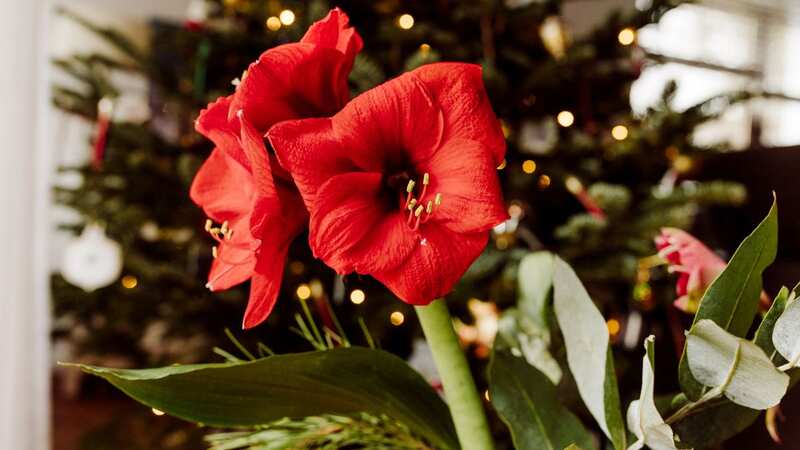Keep your amaryllis looking lovely - and the one mistake you mustn't make

Often given as a Christmas gift, the striking amarylis adorns many a festive front room at this time year.
But their radiance needn't be confined to Yuletide, and with proper care you can get these beautifully red-petalled plants blossoming well into the new year. Amaryllis, which produce large, vibrant flowers that thrive in indoor settings, are commonly grown from bulbs, although you can buy mature specimens if so desired.
For effective care of these festive blooms, Magenta Flowers, specialists in flower preservation, have shared some top tips to keep you on the right track. When tending to the houseplant's watering needs, it is crucial to avoid allowing it to linger in the water, as this can result in root rot, ultimately harming the plant.
As such, the recommended approach is to keep the soil barely moist. A simple finger dip test helps determine the need for watering: if the soil feels wet, it's advisable to wait. During watering, extra caution is advised to prevent the visible part of the bulb above the soil from getting wet, and excess water should be allowed to drain completely.
To ensure the well-being of the plant, it's recommended to keep it away from direct sunlight, maintaining room temperatures around 15°C. Sudden temperature changes should be avoided, as amaryllis is sensitive to draughts and excessive heat. The Royal Horticultural Society (RHS) experts suggest regularly turning the pot to prevent the flower stalk from growing toward the light source.
 Gales, snow and rain to batter country today with 80mph wind gusts
Gales, snow and rain to batter country today with 80mph wind gusts
For sustained blooming over the years, the RHS recommends cutting spent flower spikes down to the base after flowering is complete. Amaryllis plants can also be easily propagated, producing flowering bulbs identical to the parent plant. The RHS advises separating offsets from the main bulb during repotting from January to March, ensuring that offsets have their own roots. Plant them in individual pots with free-draining compost, maintaining a temperature of 21°C, and feed them similar to potted seedlings.
Cautionary Note:
Amaryllis contains substances that can be harmful if ingested, so you need to keep them out of reach of pets and small children. Additionally, handling the bulbs may lead to skin irritation in some individuals, so wear gloves during planting or handling.
Amaryllis facts
The amaryllis belongs to the genus Hippeastrum, and is a bulbous flowering plant native to South America, specifically in tropical and subtropical regions.
Celebrated for its expansive and vibrant flowers, amaryllis exhibits a wide array of colours, including but not limited to red, pink, white, and orange. Certain varieties showcase blooms with stripes or multiple hues.
A much-favoured choice for indoor gardening, amaryllis bulbs are commonly cultivated in pots and can be induced to bloom indoors throughout the winter season, providing a striking enhancement to home decor.
The plant is relatively easy to cultivate, appealing to both novice and seasoned gardeners. Planting the bulbs in well-draining soil and exposing them to bright, indirect light are the primary needs for successful growth.
The blooms boast remarkable longevity, often gracing the surroundings for several weeks. This enduring flowering period significantly contributes to the plant's allure as an ornamental choice.
How to preserve the bulbs
Amaryllis bulbs can be preserved and reused for subsequent blooming cycles. Following the fading of flowers, storing the bulb in a cool, dark place facilitates the possibility of encouraging a new bloom with proper care and conducive conditions.
 Tips to stop windscreen freezing and prevent blades from sticking to window
Tips to stop windscreen freezing and prevent blades from sticking to window
Read more similar news:
Comments:
comments powered by Disqus

































